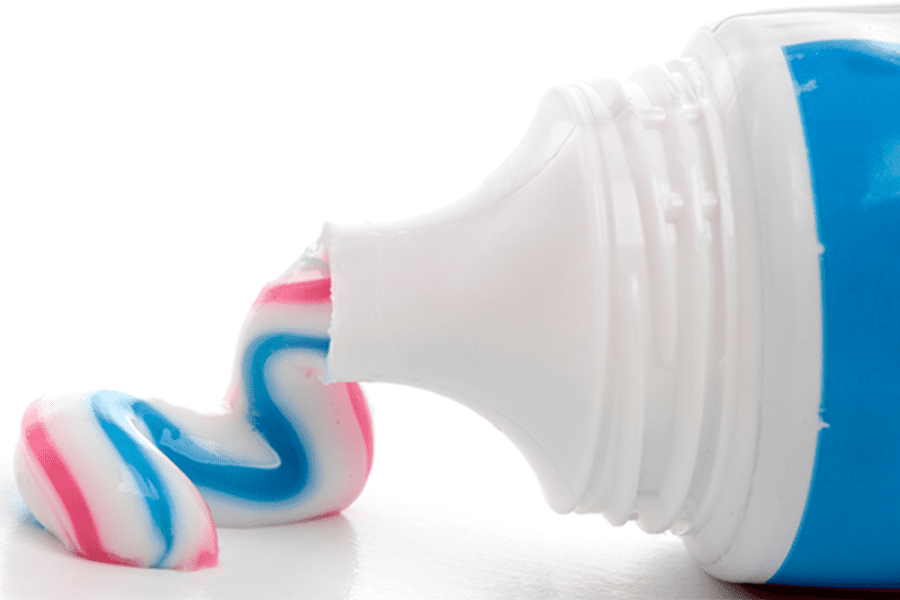When facing that daunting shelf and presented with the dozens of products boasting different benefits, don’t get overwhelmed. Here’s some things to think about when choosing your next tube of toothpaste.
Active Ingredients
For centuries, dental experts have been pursuing ways to keep teeth healthy and bright. As early as the era of the ancient Egyptians, tooth-cleaning substances have been recorded. Though unlike today’s specially formulated branded toothpastes, early mixtures contained ingredients like crushed bones, pumice, and ashes. Most modern toothpastes, meanwhile, utilize three key active ingredients to clean teeth and prevent decay: abrasives, detergents, and fluoride.
- Abrasives help remove surface deposits and stains from teeth and make the mechanical action of brushing more effective. They typically include gentle cleaning and polishing agents like hydrated silica or alumina, calcium carbonate, or dicalcium phosphate.
- Detergents such as sodium lauryl sulfate help break up and dissolve substances that would normally be hard to wash away. If you brush your teeth vigorously, detergents tend to produce a type of bubbly foam in your mouth.
- Fluoride is the vital tooth-protective ingredient in toothpaste. Whether it shows up as sodium fluoride, stannous fluoride, or sodium monofluorophosphate (MFP), fluoride has conclusively proven to help strengthen tooth enamel and prevent decay.
Specialty Ingredients
Besides these active ingredients, most toothpastes contain preservatives, binders, and flavorings. These extra ingredients prevent the toothpaste from drying out, separating, or tasting awful. Additionally, specialty toothpastes have ingredients designed for achieving specific purposes (those benefits some brands may call out on the box).
- Whitening toothpastes generally contain special abrasives or enzymes designed to remove stains on tooth surfaces. Whether or not these toothpastes will work depends on why the teeth aren’t white in the first place. If it’s an extrinsic (surface) stain, whitening toothpastes can be effective. But intrinsic (internal) discoloration may require professional teeth whitening.
- Toothpastes for sensitive teeth often include ingredients like potassium nitrate or strontium chloride, which can block sensations of pain. Teeth may become sensitive when dentin (the material within the tooth, which is normally covered by the enamel or gums) becomes exposed in the mouth. These ingredients can make brushing less painful, but it may take a few weeks to really notice the effects.
Choosing a Toothpaste
The most important aspect of selecting a toothpaste brand is making sure it has the ADA (American Dental Association) Seal of Acceptance on the label. This seal lets you know that the toothpaste contains fluoride and that the manufacturer’s claims about the toothpaste have been independently tested and verified. Past the ADA seal, pick a toothpaste that best reflects the benefits which will serve your oral and dental hygiene goals.

